Bulawayo's Rhodes Matopos National Park
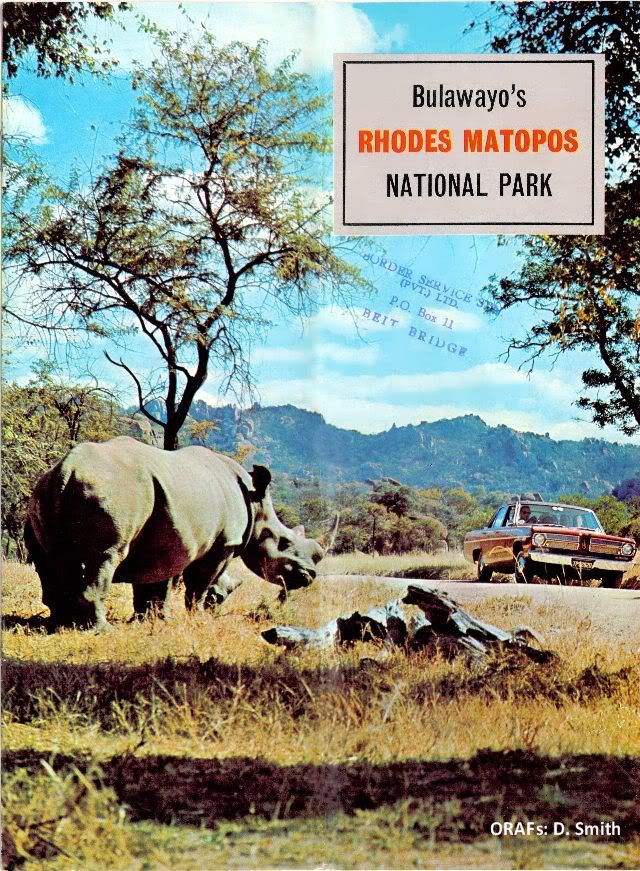
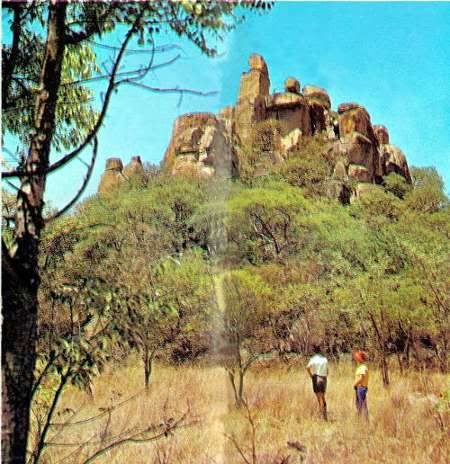
THE Matopos Hills are unique. Lying south of the city of Bulawayo, and covering about 1,200 square miles, here is an area of wind-sculptured granite hills, grey, bare and forbidding, alternating with cool, green wooded valleys.
It has been a place of retreat for untold centuries— for the bushman, who left a legacy of painted caves; for the Matabele, who fought a bitter rebellion here; and now in peaceful days, for the Rhodesian and visitor who travel through it discovering its beauties and its peacefulness.
183 square miles have been set aside as the Rhodes Matopos National Park, an area reserved for recreation, relaxation, and the conservation of the rich flora and fauna.
Cecil Rhodes loved this part of the country that bears his name—perhaps because its contrasts matched the mixed character of this remarkable man. It was certainly the scene of his greatest personal triumph—the indabas where he met, unarmed and almost alone, the rebelling Matabele chiefs, and persuaded them to turn to ways of peace.
Now a network of roads traverse the park, dams have been built, a game park created, holiday accommodation provided, and thousands of visitors come each year, to share with Rhodesians this unique natural wonder.
Here, as the pictures on these pages show, there is something for everyone — the historian, nature-lover, and holiday maker.
Cecil Rhodes chose his own burial place, on the summit of a hill he said commanded "a view of the world". Nearby on this consecrated ground lie his friend Dr. Jameson, Sir Charles Coghlan, the first premier of Rhodesia, and the men of the Shangani Patrol. Visitors may drive to the foot of the hill, and walk to the top by a steep path.
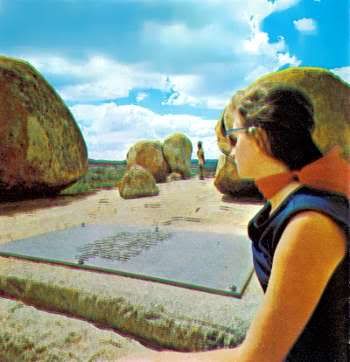
30 miles from Bulawayo, reached by a turnoff 15 miles from the city on the Essexvale road, is Diana's Pool, a popular beauty and picnic spot.
The surrounding area is rich in Matabele Rebellion associations.

One of the most accessible of the many caves with ancient rock paintings which occur in the Matopos, is Nswatugi. Here the custodian dresses in Matabele regalia to guide visitors from the car park to the cave. A small site museum is situated here. There are other paintings at Pomongwe, White Rhino Shelter and Bambata caves.
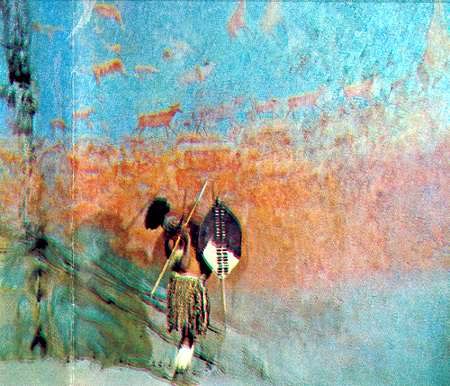
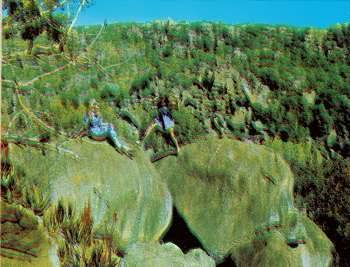


Holiday relaxations in the park are many, including scrambling around the giant boulders to viewpoints (above), or caravanning (below) in a shady corner of one of the area's five caravan and camping sites.


At Maleme Dam there are holiday chalets and cottages maintained by the park staff. They offer reasonably priced accommodation in one of the park's most beautiful areas, near rock paintings and the game park. There is also a caravan and camping site. Maleme is 32 miles from Bulawayo on a tarred road, which includes a circular drive to Rhodes's Grave.
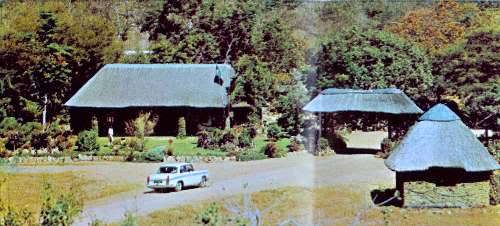



The 6,500-acre game park in the national park is the home of a wide variety of Rhodesian wild life, including sable (below), eland and wildebeeste (below) and white rhino (front cover), which can be viewed in superb scenic surroundings. The park is open all the year round, and a small entrance charge is made.
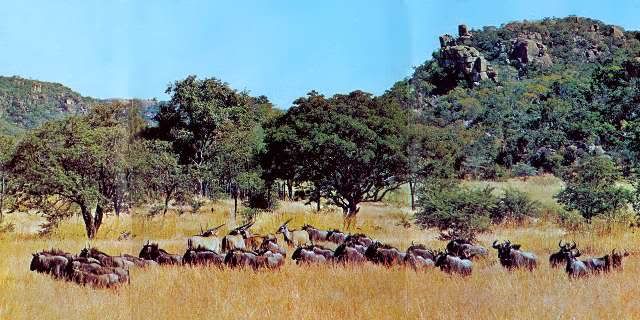
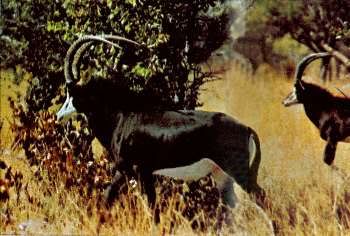
Year-round fishing for bream, black bass and barbel can be enjoyed in the park's dams, at reasonable rates. Permits are available at the Warden's office at Maleme, at fishing tackle suppliers in Bulawayo, and at the various dams.
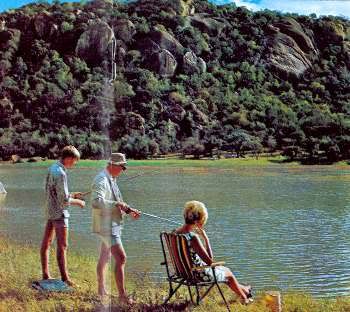


Year-round fishing for bream, black bass and barbel can be enjoyed in the park's dams, at reasonable rates. Permits are available at the Warden's office at Maleme, at fishing tackle suppliers in Bulawayo, and at the various dams.

20 miles from Bulawayo, reached by a turnoff 18 miles from the city on the Plumtree road, is Cyrene Mission. The church here is decorated with colourful murals and richly carved furniture, the work of the pupils at the school. The visitor may return to Bulawayo on a circular drive through the Rhodes Matopos National Park.

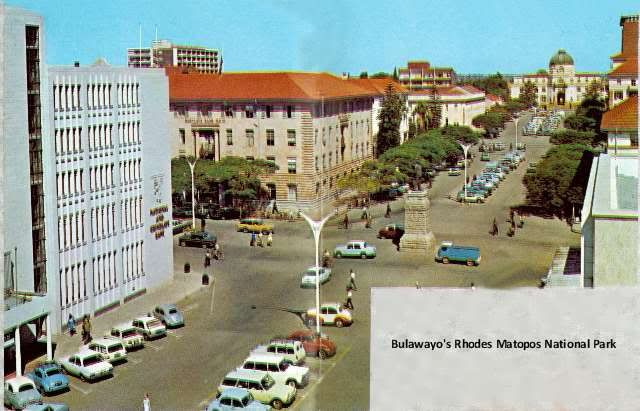
Bulawayo, lies only 20 miles north of the Rhodes-Matopos National Park, and although Rhodesia's second-largest city, the capital of the province of Matabeleland, and an important industrial and commercial centre, still retains an atmosphere dating from its pioneer days. Wide streets (built to allow a wagon with a full span of oxen to turn around) and many buildings dating back to the turn of the century, link the modern city with Rhodesia's past. There is much for the visitor to see and do here, and the Bulawayo Publicity Association maintains a bureau in Main Street where information on the city and the surrounding area may be obtained.
At night one may stroll through Centenary and Central parks, near the fountain (below built in 1968 to commemorate the city's 75th birthday, dine in any one of a wide variety of first-class restaurants, or visit a night club and enjoy the cabaret. There are, of course, also cinemas, a theatre and television.
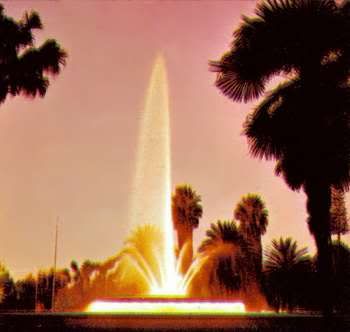

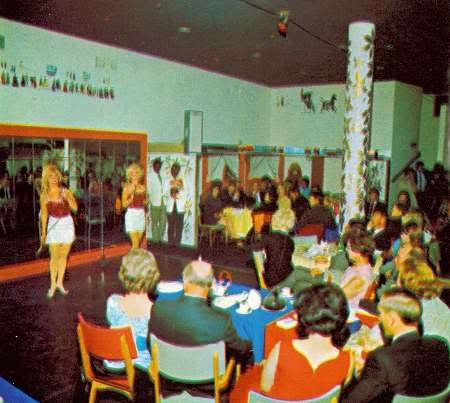
In Centenary Park, within walking distance of the city centre, is the impressive National Museum of Rhodesia. A treasure house of the nation's history, wild life and geology, its extensive, modern galleries are a vivid and colourful introduction to the riches of Rhodesia. Nearby is a collection of mining antiquaria. The park also contains a small game park, aviary and miniature railway.
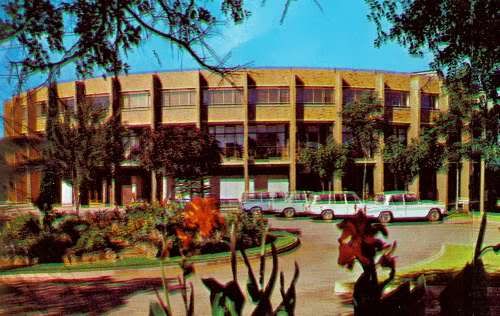
Bulawayo is a city with ample parkland and open spaces. Near the city centre and adjacent to the site of Trade Fair Rhodesia, the annual exhibition of industry and commerce, and overlooked by the fair's spire, is Lion Loch, a five-acre ornamental lake where boats may be hired.
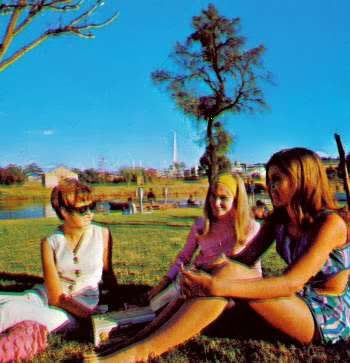
Set near parks and the municipal swimming pool is the eight-acre City of Bulawayo caravan park, one of the best in Southern Africa. A five-acre camping site, also operated by the municipality, is situated four miles from the city centre.
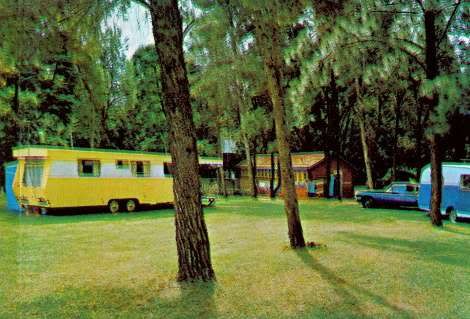
At Umgusa Dam, near the city, yachting and boating clubs hold regular regattas and races. Yachting is also permitted on the dams in the Matopos.
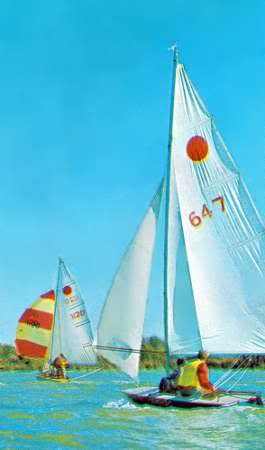
A small museum, set amongst aloe gardens, displays relics found on the site.

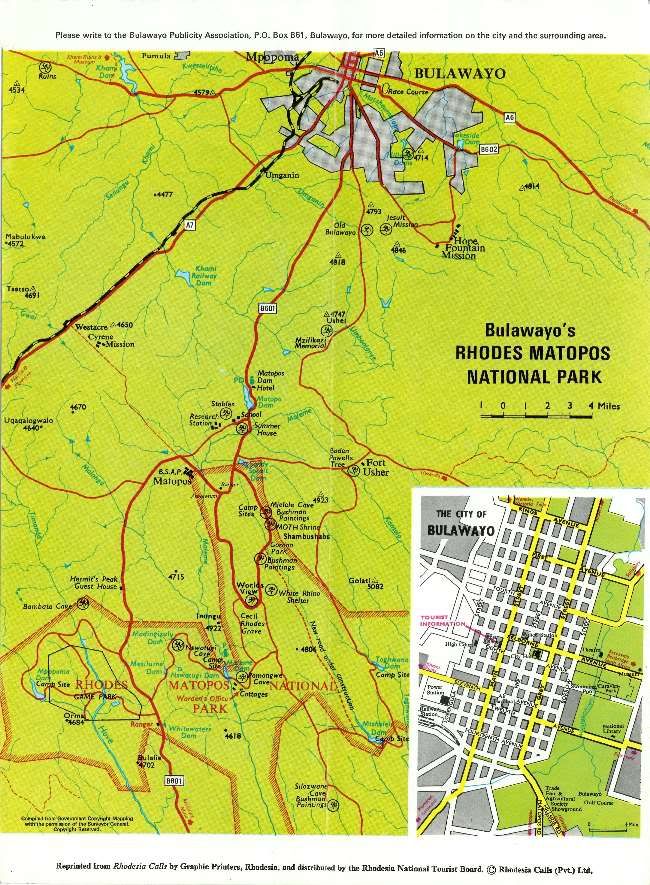
End of Booklet
Recompiled, by Eddy Norris, from scanned copies of the booklet made available by Diarmid Smith. Thanks Diarmid
The recompilation was done for no or intended financial gain but rather as a ORAFs initiative to record the memories of Rhodesia.
Thanks to:-
My son, Paul Norris, for the ISP sponsorship.
Paul Mroz for the image hosting sponsorship.
Robb Ellis for his assistance.
Should you wish to contact Eddy Norris please mail me on orafs11@gmail.com


Bulawayo, lies only 20 miles north of the Rhodes-Matopos National Park, and although Rhodesia's second-largest city, the capital of the province of Matabeleland, and an important industrial and commercial centre, still retains an atmosphere dating from its pioneer days. Wide streets (built to allow a wagon with a full span of oxen to turn around) and many buildings dating back to the turn of the century, link the modern city with Rhodesia's past. There is much for the visitor to see and do here, and the Bulawayo Publicity Association maintains a bureau in Main Street where information on the city and the surrounding area may be obtained.
At night one may stroll through Centenary and Central parks, near the fountain (below built in 1968 to commemorate the city's 75th birthday, dine in any one of a wide variety of first-class restaurants, or visit a night club and enjoy the cabaret. There are, of course, also cinemas, a theatre and television.



In Centenary Park, within walking distance of the city centre, is the impressive National Museum of Rhodesia. A treasure house of the nation's history, wild life and geology, its extensive, modern galleries are a vivid and colourful introduction to the riches of Rhodesia. Nearby is a collection of mining antiquaria. The park also contains a small game park, aviary and miniature railway.

Bulawayo is a city with ample parkland and open spaces. Near the city centre and adjacent to the site of Trade Fair Rhodesia, the annual exhibition of industry and commerce, and overlooked by the fair's spire, is Lion Loch, a five-acre ornamental lake where boats may be hired.

Set near parks and the municipal swimming pool is the eight-acre City of Bulawayo caravan park, one of the best in Southern Africa. A five-acre camping site, also operated by the municipality, is situated four miles from the city centre.

At Umgusa Dam, near the city, yachting and boating clubs hold regular regattas and races. Yachting is also permitted on the dams in the Matopos.

14 miles west of the city are the Khami Ruins, a series of terraces and passages supported by massive granite walls. Discovered in 1897, it is believed the ruins date from the 17th century, and were inhabited by the Rozwi people until about 1820.
A small museum, set amongst aloe gardens, displays relics found on the site.


End of Booklet
Recompiled, by Eddy Norris, from scanned copies of the booklet made available by Diarmid Smith. Thanks Diarmid
The recompilation was done for no or intended financial gain but rather as a ORAFs initiative to record the memories of Rhodesia.
Thanks to:-
My son, Paul Norris, for the ISP sponsorship.
Paul Mroz for the image hosting sponsorship.
Robb Ellis for his assistance.
Should you wish to contact Eddy Norris please mail me on orafs11@gmail.com


0 Comments:
Post a Comment
Subscribe to Post Comments [Atom]
<< Home